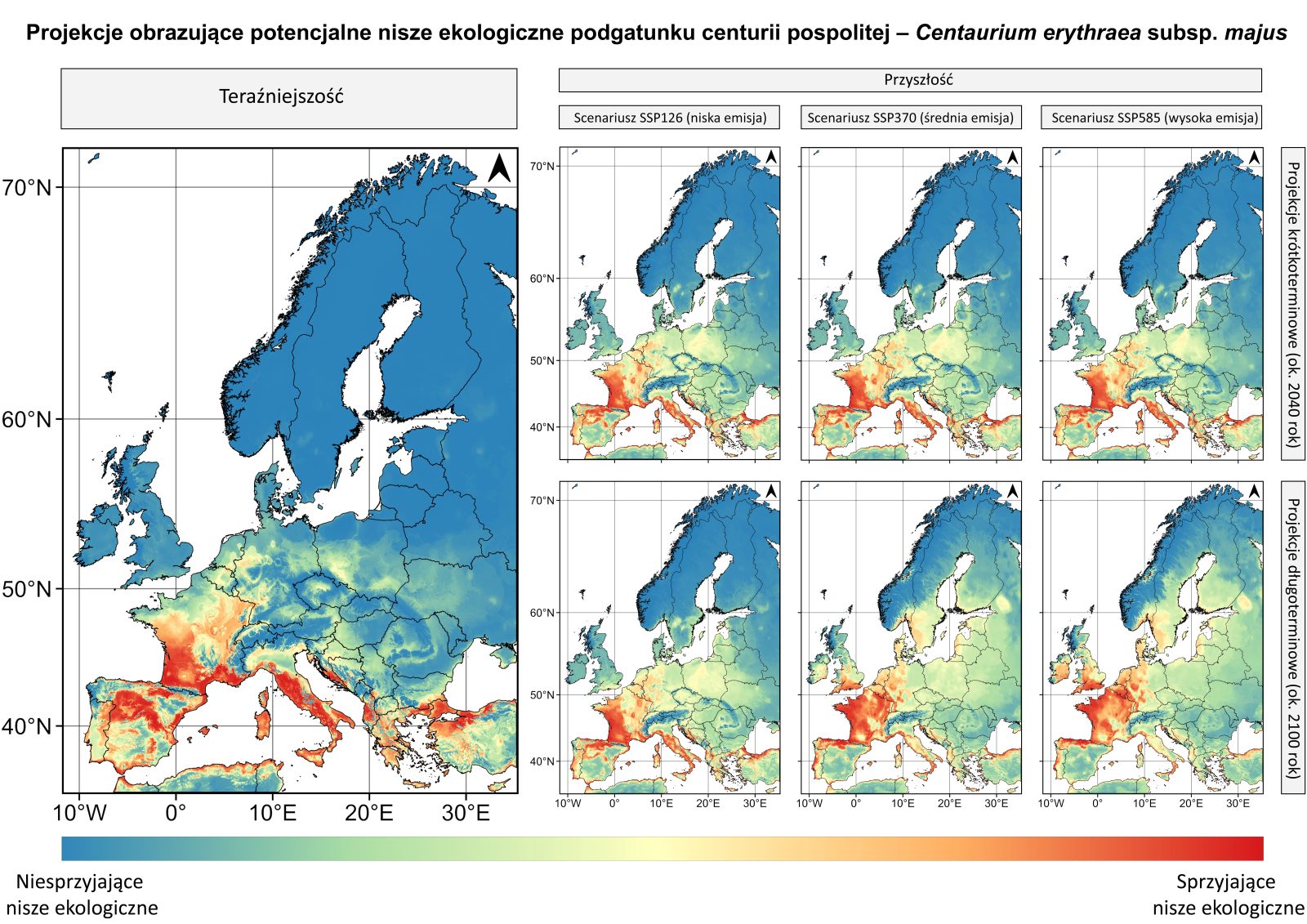
Climate change and ranges of species: a new botanical discovery
Climate change is widely perceived as a negative phenomenon. The sudden, heavy rains and violent floods recently seen in various regions of Europe, the melting of ice caps or the rise of sea levels are just a few of its effects. However, climate change can also facilitate the movement of plants into new geographical regions, where due to the change of conditions they can find new, suitable habitats.
A remarkable example of this phenomenon was just discovered by an interdisciplinary team of scientists led by dr hab. Anna Jakubska-Busse, UWr professor. Centaurium erythraea subsp. majus, a subspecies of common centaury which belongs to the gentian family (Gentianaceae), was identified on Polish land for the first time in recorded history by professor Jakubska-Busse’s team. This discovery provides important data, since this taxon occurs naturally in the western region of the Mediterranean: mainly in Morocco, Algeria, Tunisia, Portugal, Sardinia, Sicily, Spain and France, which are regions with much warmer climates. The presence of this subspecies in south-western Poland, outside of its natural range, was confirmed by the scientists through both morphological studies and genetic testing.
Centaury’s miraculous properties, known for centuries
Common centaury is a medicinal plant, well-known and used in many regions of Europe since ancient times. Its medicinal properties were known as early as the 5th and 4th century BC. In medieval times it was used as an component of theriac, a multi-ingredient concoction meant to serve as an antidote or a miraculous panacea for various ailments. Bitter infusions of centaury herbs were used in folk medicine for curing rickets, fainting or menstrual disorders. Centaury has many applications: it is anti-inflammatory, antimicrobial, and antifungal; it has calming, diuretic, and spasmolytic qualities; it also lowers blood pressure and cholesterol. Additionally, it has an anti-cancer effect. As a bitter raw herbal material, it is used to this day in the treatment of digestive disorders as it stimulates the production of saliva and digestive juices. It is also helpful in treating constipation. Centaury extracts are also used in cosmetics, where they excel at moisturizing and softening, and improve the elasticity and colour of the skin.
The two subspecies of common centaury most prevalent in Europe are C. erythraea subsp. erythraea and C. erythraea subsp. majus. They are distinct genetically and morphologically; some examples of their differences are the shape and size of their corollas, the size and density of their inflorescence, the flower colors, and each subspecies’ range of location. Unfortunately, since common centaury is a plant that is very morphologically variable, the identification of its subspecies is not easy under natural conditions.
Algorithms were used to foresee if subsp. majus will survive in the new habitat
Aside from detecting the new taxon’s presence on Polish territory, the scientists have used the techniques of Species Distribution Modelling (SDM) to foresee possible future distribution of C. erythraea subsp. majus in Europe, which is related to the emergence of new viable habitats for the plant due to a warming climate. SDM techniques are based on a statistical analysis of the relationship between species occurrence and environmental variables, which allows for the identification of key climatic factors that favor the expansion of the studied taxons. The models use various mathematical algorithms that, based on the places of occurrence of the species and climatic data, create projections of potential ecological niches. This niche defines the environmental conditions in which a species can survive and reproduce, including the resources necessary for its functioning in the ecosystem.
Short-term scenarios created by professor Jakubska-Busse’s team indicate that C. erythraea subsp. majus will maintain most of its current suitable habitats and possibly expand into the lowlands of Central Europe. However, long-term prognoses show a possible reduction of the current suitable habitats for the taxon, especially in the southern parts of its range, and a possible expansion into the territories of north-western Europe. The results of this research provide further evident proof for the impact ongoing climate changes have on the ranges of species.
The team’s discovery was published in a journal with high publication points
The credit for the discovery, which was published in Science of The Total Environment, goes to: dr hab. Anna Jakubska-Brusse, professor of UWr, a botanist specializing in plant taxonomy; dr Anna Brudzińska-Kosior, who defended her doctoral thesis done at UWr’s Department of Botany and focusing on the biology and ecology of common centaury this October; mgr Adrian Wysocki from Wrocław University of Environmental and Life Sciences, a botanist researching the impact of climate change on species’ distribution; and team members from University of Opole: dr Paweł J. Domagała, a geneticist; dr hab. Monika Sporek, professor of University of Opole, a botanist; and dr hab. Grzegorz Kosior, a botanist.
Written by: Anna Jakubska-Busse, Adrian Wysocki
Translated by Monika Klimiuk (student of English Studies at the University of Wrocław) as part of the translation practice.

























